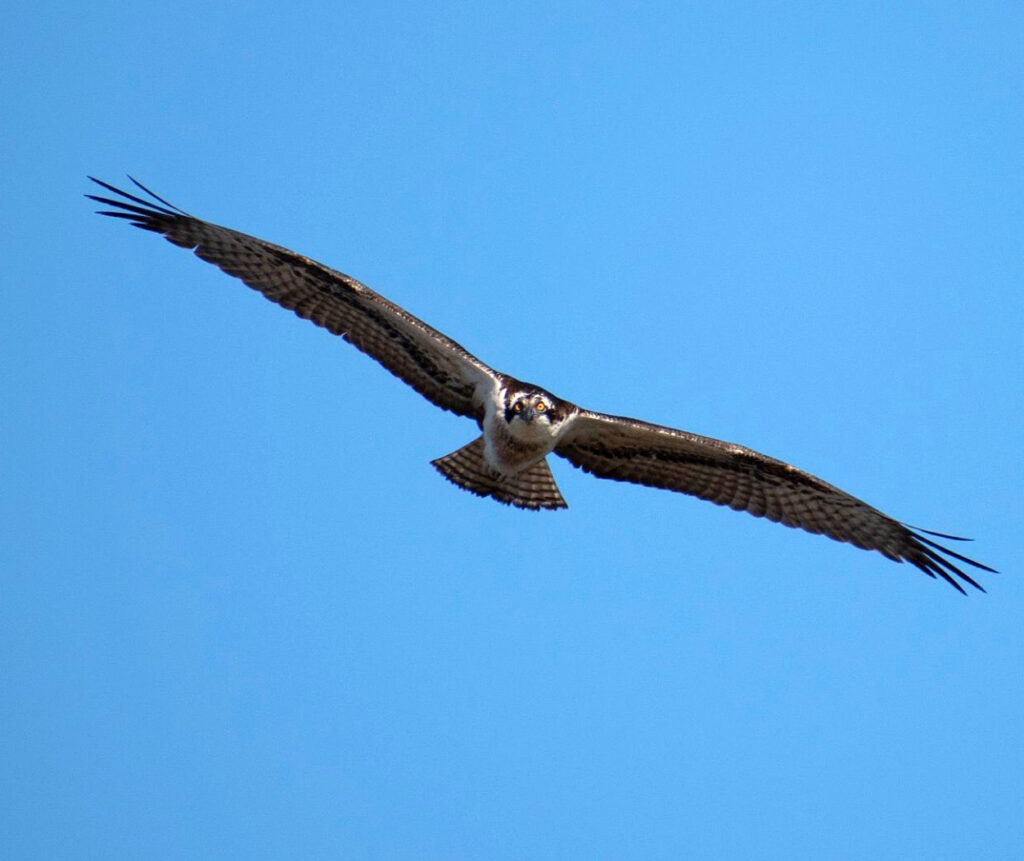By Grace Huffman

Earlier this month I was birding with our president, Betsy Hacker, as well as members Brian Mara and Hal Yocum at Lake Hefner. It was a great day, as despite the cold we had over 50 species and had a couple of other birders join us for a bit during our walk. Unfortunately, my camera battery was low and it died about 2/3 of the way through, but not before I was able to capture some beautiful shots of an Osprey.
Osprey are gorgeous raptors, largely brown on top and white on bottom, giving them a striking appearance. The yellow eyes and dark eye stripe makes them look truly fierce. Juveniles look a little bit different, as their dark feathers have buffy tips, making them look scaled. Another unique feature is their reversible outer toes, which help them grab onto those slippery fish!
Here in Oklahoma you can find them during both spring and fall migration at lakes and other bodies of water statewide. Most of the birds breed to our north, with some breeding to the east and the west as well. Ospreys build massive platform nests out of sticks, and they will return to the same one for years, building it up each time. The female Osprey will lay anywhere from 1-4 eggs and incubate them for up to 42 days. The young spend over a month and a half in the nest before fledging.
Ospreys are here until the end of the month, so you still have time to go looking for them. My favorite sighting of an Osprey was several years ago at Lake Hefner. The bird was in the shallow water bathing! It seemed to be enjoying itself and was splashing water everywhere. It’s also thrilling to watch them dive into the water. Normally I only see them catch a fish at the surface, but they can dive up to 3 feet under! Once they catch a fish, they orientate the head is in the front, so it’s more aerodynamic for the flight back to the perch, where it is eaten. Sometimes though, an Osprey’s eyes are too big for its stomach, as Ospreys have been known to catch fish that are too big to carry off. If the bird has too tight of a grip on the fish, it won’t be able to let go and the bird will drown.
While listed on some state conservation lists, the ICUN as a hole does not consider the Osprey to be endangered. While they were in decline many years ago, their population has rebounded since the banning of DDT. Today, the biggest cause of Osprey deaths happens at the nest, where baling twine and fishing lines are incorporated into nests by adults, and young ones get tangled in it and become unable to leave the nest.
References include allaboutbirds.org and The Sibley Field Guide to Birds, 2nd edition.
